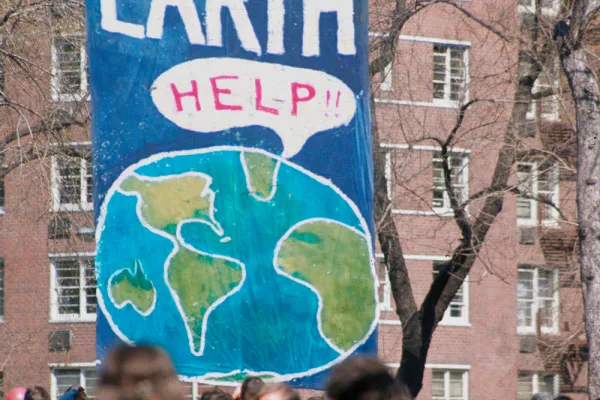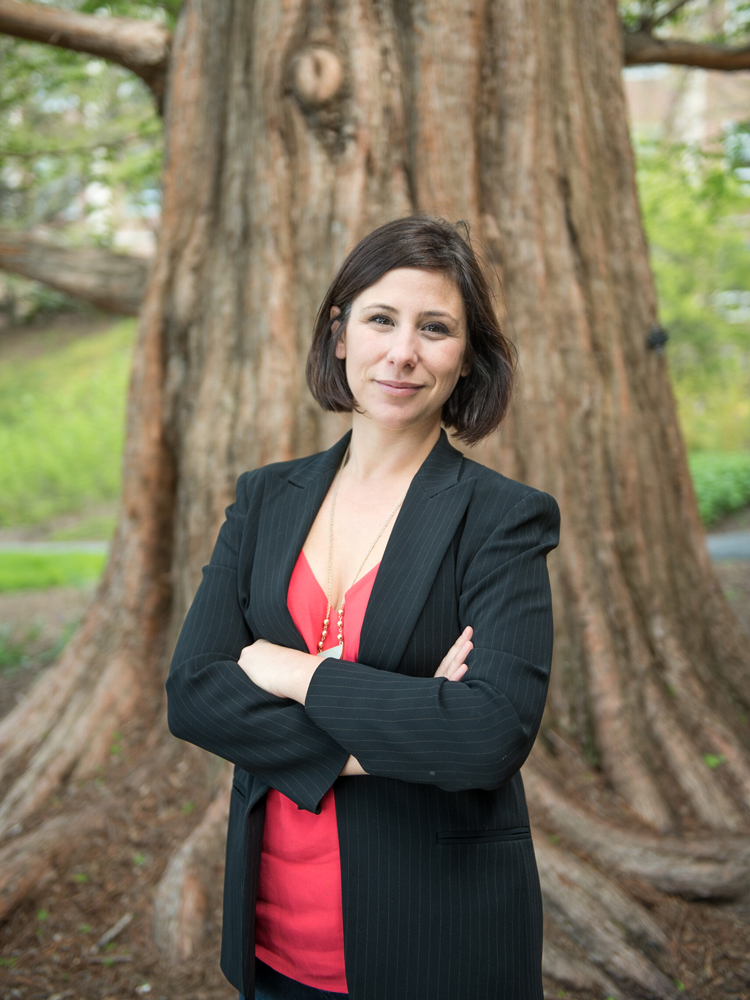Camille Washington-Ottombre: On Earth Day
Research & Inquiry

Published March 25, 2020
Fifty years ago, for the first Earth Day on April 22, 1970, Smith students wrote to their parents saying how scared they were of the upcoming destruction of the Earth and urged their families to act now to save the world.
As we are getting ready to celebrate the 50th anniversary of Earth Day, we ought to reflect upon and analyze what Smith and other higher education institutions (HEIs) have done to promote durable sustainability and to address Smithies’ legitimate fears.
Because of their distinct role in the social contract, HEIs in the United States have been predisposed to be at the forefront of social change and to address complex, urgent problems. They operate with a distinct amount of freedom of action and influence. In exchange, they are entrusted with educating students and producing knowledge that will foster a thriving civil society. Historically, HEIs have often aimed to serve the greater good by supporting and embodying radical social changes that, over time, have significantly altered behavior patterns and cultural values and norms. For instance, in the 1830s, in reaction to the horrors of slavery, many college students and professors became major actors in the Underground Railroad.
In the last 50 years, colleges and universities have worked to better manage environmental issues on campuses and beyond and to change behaviors and values pertaining to the environment. Such endeavors have been referred to as “campus sustainability.” This term encompasses research and curricula, but also programming, operations and institutional dimensions.
In a recent article, colleagues and I analyze how campus sustainability has developed since the early 1970s, broken into three distinct epochs. In the first epoch, “Greening the campus (1970s–90s),” sustainability efforts focused mostly on abating pollution and waste. The second epoch, “The growth of campus sustainability (1990s–2010s),” was characterized by the institutionalization of campus sustainability, a search for energy efficiency and a focus on readily measurable changes in campus operation. The third epoch—and where we are today, “Transforming HEIs to implement sustainability on campus and beyond (since 2010s)”—is marked by strong partnerships with local communities to deeply transform societies for sustainability. Campus sustainability initially emerged as informal, ecologically focused, campus-confined initiatives that prioritized educating agents of change and modeling change. Over time it has evolved toward more formal, holistic, extramural policies with higher education institutions assuming the role of agents of change.
Beyond instituting mere operational changes, campuses have attempted to promote the kind of deep social change required for durable sustainability. HEIs have sought to cultivate more sustainable and just interactions between people and the nonhuman environment, among diverse groups of people and between generations. By focusing explicitly on the social change aspects of sustainability, HEIs have occupied a unique role within the broader governance of the environment. They have constantly innovated and responded to failing public governance. Campus sustainability has deeply reformed the research, curriculum, programming, operations and institutional dimensions at colleges and universities. As a result, behavior patterns, cultural values and norms have profoundly changed on U.S. campuses.
At Smith and beyond, HEIs have more work to do to fully embrace their role and responsibilities as agents of change. The movement of social change promoted by HEIs needs to be amplified beyond energy savings, green buildings and carbon neutrality. Fifty years after the first Earth Day, our students still fear the end of the world. They fear growing inequalities and are fighting for a more just and sustainable world. We owe it to past, present and future students to constantly support our institution through the substantial transformations needed to become a true agent of change for a more just and sustainable world.

Camille Washington-Ottombre is associate professor of environmental science and policy at Smith.
Acknowledgments: The author would like to thank Nanci Young, college archivist, for her help in finding gems about the first Earth Day at Smith.
This story appears in the Spring 2020 issue of the Smith Alumnae Quarterly.
SMITH ALUMNAE QUARTERLY
Special Climate Issue

Mission: HEALTHY EARTH
How the Smith community is fighting to save our planet
College campuses brought attention to environmentalism. 50 years later, they’re still leading the way to a more sustainable planet. But are they doing enough? Photograph courtesy of Hulton Archive/Getty Images